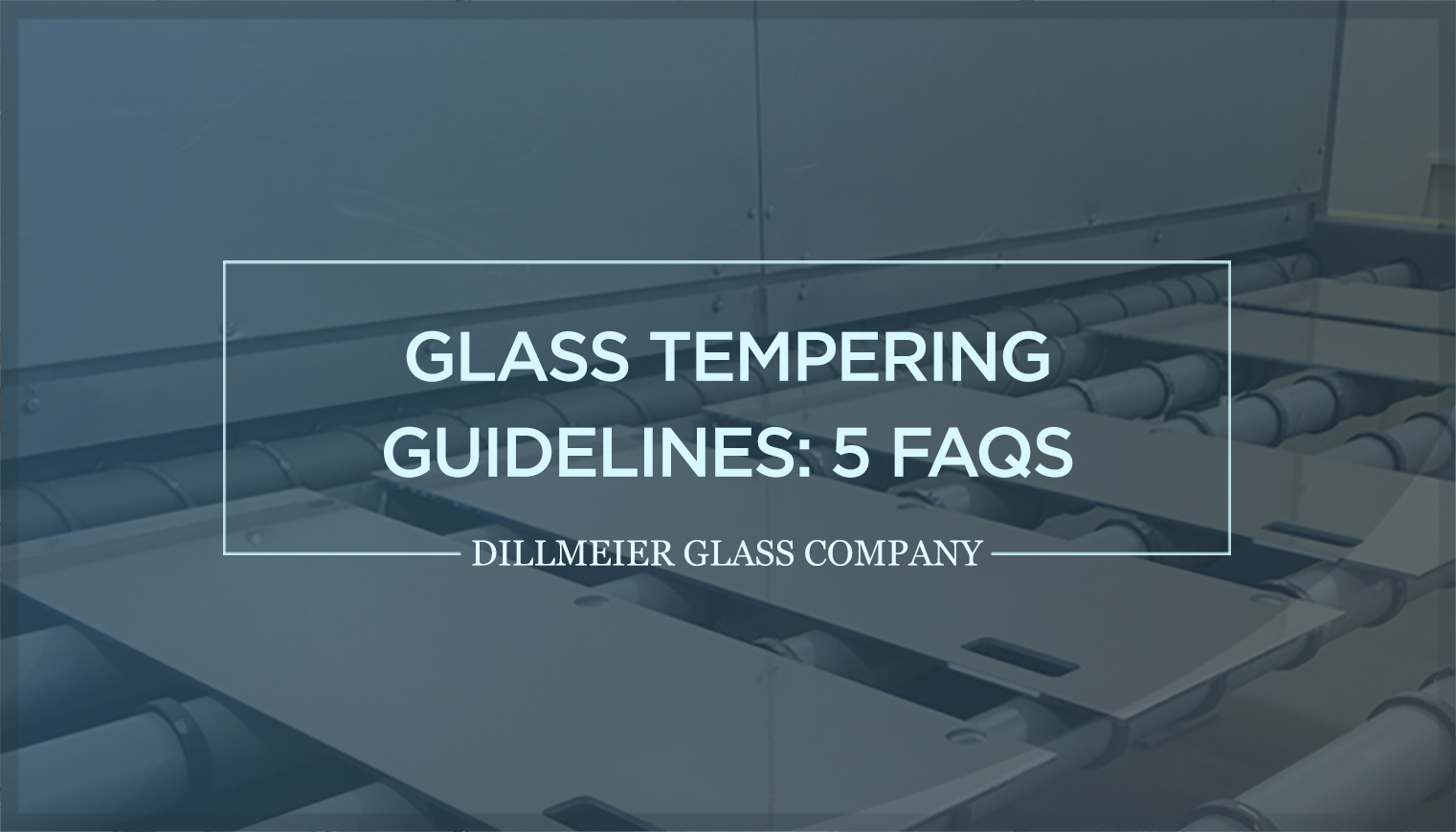Glass Tempering Guidelines: 5 FAQs

When it comes to glass tempering, and hole and notch placement, it’s best to enlist an experienced fabricator with the proper tools, equipment, and expertise. Comprising heating and cooling within special ovens, this tempering process is governed by specific guidelines outlined by standards organization ASTM International.

These specifications also include requirements for hole- and notch-drilling procedures, and heat-strengthened and full-tempered flat glass.
Below we’ll answer five frequently asked questions about glass tempering guidelines, such as hole and notch placement, limitations, restrictions, and more.
1. What is Tempered Glass?
Whether your project specifications are outside the ASTM guidelines, or you’re unsure of glass thickness and hole placement, it’s best to work with a trusted glass fabricator.
As aforementioned, glass tempering is a post-fabrication process in which glass is heated and then quickly cooled for high-traffic applications requiring added strength, durability, and safety. These include entrance doors; shower and tub enclosures; railings; display cases; and office walls, partitions, and dividers.
If breakage should occur, tempered glass shatters into pebble-like pieces, rather than jagged slivers with sharp edges. Unlike plexiglass and acrylic, tempered glass is simple to clean and doesn’t scratch easily.
Dillmeier Glass Company provides further tempering assurance through its designation as a Safety Glazing Certification Council (SGCC)-certified tempering company for consistent production standards.
2. My tempered glass project has holes or notches. Can I place them anywhere, and can they be any size?
Stress and tension experienced during tempering will cause glass to shatter if holes and notches aren’t appropriately drilled. This also includes hinges and hardware for applications such as glass doors, shelves, or UV-bonded cases.
Back-painting, and other decorative elements, such as Dillmeier Glass Company’s flame-forged, ceramic color-coating process, should also be applied before tempering.
Hole diameter must be equal or greater than the glass thickness. If you have ⅜-inch thick glass, your hole must be a minimum diameter of ⅜ inch. For ⅛-inch glass, you must drill a one-quarter-inch minimum diameter hole to avoid possible breakage.
3. How do I know if my project is outside the tempering guidelines?
Whether your project specifications are outside the ASTM guidelines, or you’re unsure of glass thickness and hole placement, it’s best to work with a trusted glass fabricator. It can ensure customized solutions, such as slotted glass, relief cuts, and other adjustments.
This is also helpful if you’ve pre-purchased specific hardware and other project components.
Consider the following to verify your project is within the ASTM guidelines:
- Effectively communicate your specified dimensions and glass thickness at project submission. Consult our downloadable guide if you're unsure.
- Keep these guidelines in mind for the most accurate measurements and specifications. An experienced fabricator can also assist with any post-tempering redesigns.
- If your project requires hinges, clamps, or other hardware, consult the guidelines for hole locations and diameters correlating with your glass size and thickness.
- Ensure holes and notches for hinges and hardware meet glass size and edge distance requirements.
4. What can I do if my project requires processes outside of the guidelines?
While it’s possible to make an exception if your project falls slightly outside tempering guidelines, it’s recommended to consult them before project commencement. Pertinent elements include glass thickness, and cutting and drilling techniques.
A fabricator with a specialized engineering department can provide guidance with customized designs.
While it’s possible to make an exception if your project falls slightly outside tempering guidelines, it’s recommended to consult them before project commencement.
5. Are there strict limitations?
Specifications exist for glass to safely and efficiently move through the process without stresses or breakage. Depending on your project, potential modifications could include changing hole and notch positions, or glass thickness and size.
Consult a Trusted Fabricator
It’s best to work with an experienced glass fabricator to assist with tempering guidelines adherence, and customized designs and engineering.
Contact us to learn more about how we can help with questions regarding your tempered glass project.


